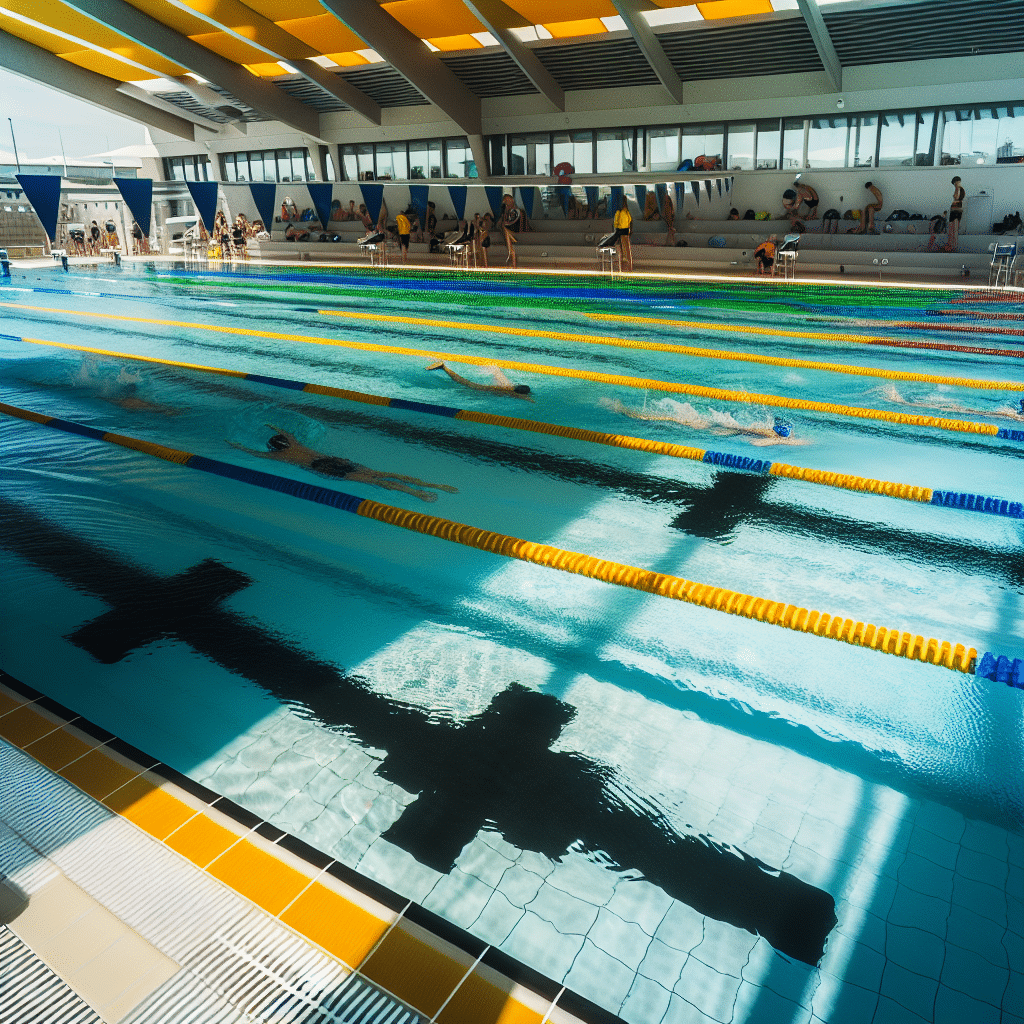Swimming pools provide a refreshing escape during summer months, offer a place for rigorous exercise, and serve as hubs for social gatherings. However, one aspect of swimming pools that often goes unnoticed but plays a crucial role in the safety and efficiency of swimming is swimming pool lines. These lines, both beneath and at the water’s surface, guide swimmers, ensuring streamlined swimming and minimizing collisions. Let’s dive into the role and importance of swimming pool lines, their types, and how to maintain them.
Why Are Swimming Pool Lines Important?
Swimming pool lines serve multiple purposes, enhancing both functionality and aesthetics. First and foremost, they provide clear visual markers for swimmers, crucial for maintaining straight paths and avoiding collisions in busy pools. This is particularly important during swim meets, where precision and speed are paramount.
Guidance for Swimmers
Just as lane dividers in a running track keep runners aligned, swimming pool lines guide swimmers. These lines help swimmers maintain a straight path, which is invaluable for competitive swimmers. A straight path ensures energy efficiency by reducing unnecessary movements, ultimately contributing to improved swim times.
Safety Measures
Safety is another critical reason for properly marked swimming pool lines. In crowded pools, these lines help segregate different swimming areas – for example, shallow areas for beginners and deeper zones for more experienced swimmers. This zoning ensures that everyone can swim safely and comfortably, minimizing the risk of accidents.
The Different Types of Swimming Pool Lines
Understanding the different types of swimming pool lines can help in better pool management and maintenance. The two primary types of lines are surface lines and wall lines.
Surface Lines
Surface lines are visible markers on the water’s surface. These lines are typically made from floating lane ropes or buoys, which demarcate swimming lanes. They are particularly vital during swim competitions, providing clear, visual guidance for swimmers.
1. **Lane Ropes**: These are floating ropes consisting of a series of floats attached at regular intervals. Lane ropes help in reducing wave interference between lanes, thus creating a smoother swimming experience.
2. **Tethered Buoys**: This type is less common and is often used in open water swimming pools or training facilities. Tethered buoys serve to guide swimmers in longer, unmarked laps, preventing veering off course.
Wall Lines
Wall lines are markings on the pool walls and floor, helping swimmers gauge their position within the pool. These lines are indispensable for flip turns and other competitive swimming techniques.
1. **Floor Lines**: These markings run along the pool floor and are usually dark, contrasting colors. They guide swimmers during laps and are particularly useful for maintaining straight lines during backstroke.
2. **Cross T’s**: Typically found at the end of each lane, these “T” shaped markings signal swimmers to prepare for a wall turn. They are essential for competitive swimmers to time their flip turns accurately.
Maintaining Swimming Pool Lines
Proper maintenance of swimming pool lines is critical for ensuring optimal functionality and safety. Routine inspection and cleaning can prevent wear and tear, ensuring that the lines remain visible and effective.
Regular Cleaning
Over time, swimming pool lines can accumulate dirt, algae, or other residues. Regular scrubbing and the use of appropriate cleaning agents can help maintain their visibility. This is especially important for wall lines, where visibility is crucial for swimmers.
Periodic Replacement
Even with regular maintenance, swimming pool lines may eventually wear out. Periodic replacement ensures that the lines remain effective. Lane ropes, for instance, may need replacement every few years, especially in heavily used pools.
Inspection and Repair
Regular inspection can help identify issues early. Look for frayed lane ropes, faded floor lines, or damaged buoys. Prompt repair or replacement of damaged parts can extend the lifespan of the pool lines and ensure the safety of all pool users.
Conclusion
Swimming pool lines, often overlooked, are essential components that greatly contribute to the safety, efficiency, and enjoyment of swimming. Whether you are a competitive swimmer looking to improve your times or a pool owner aiming to enhance user safety, understanding and maintaining swimming pool lines is crucial. By ensuring these lines are visible, intact, and properly maintained, you can guarantee a better swimming experience for everyone involved. So next time you take a dip, spare a thought for those humble lines guiding your way.




